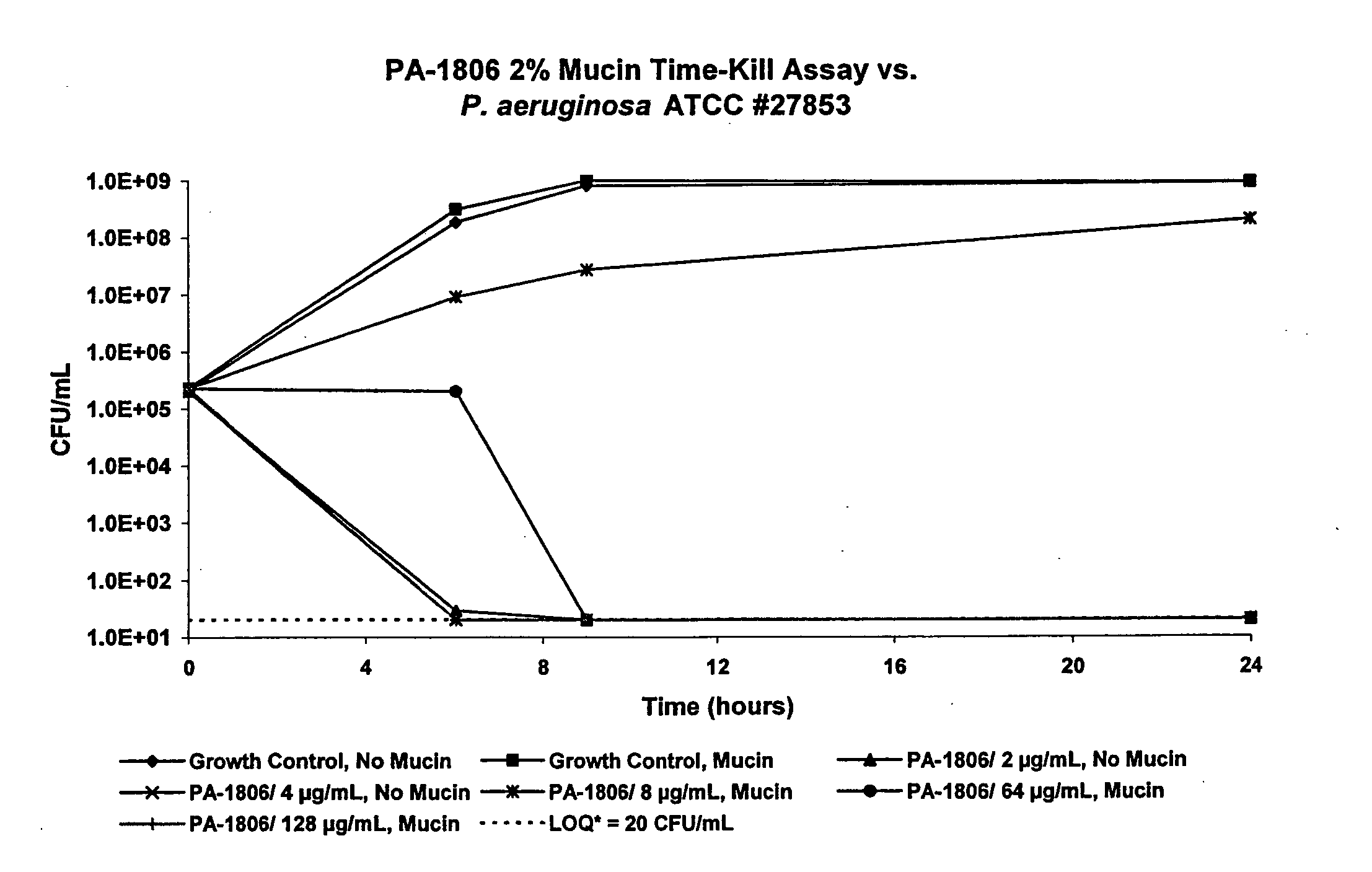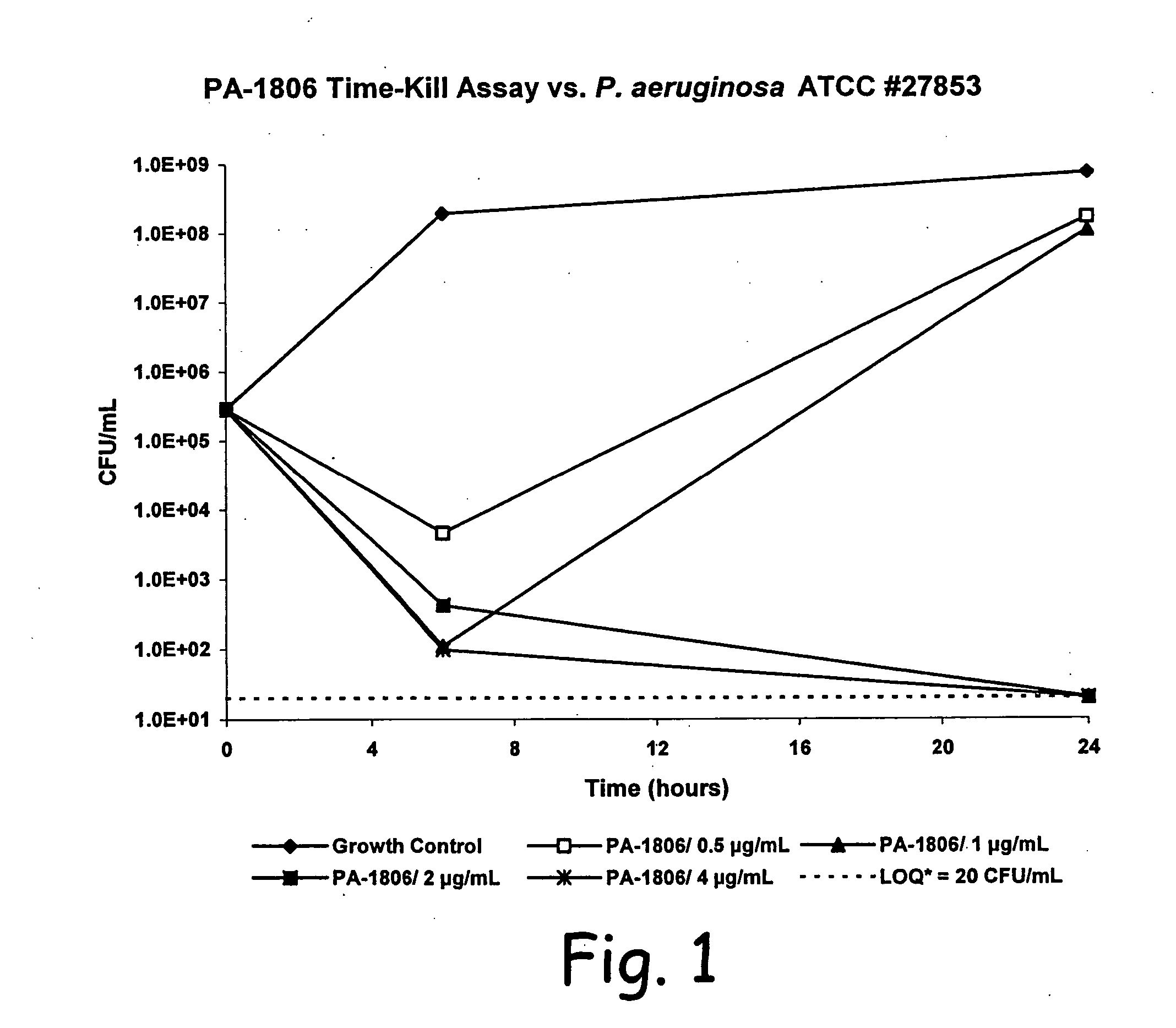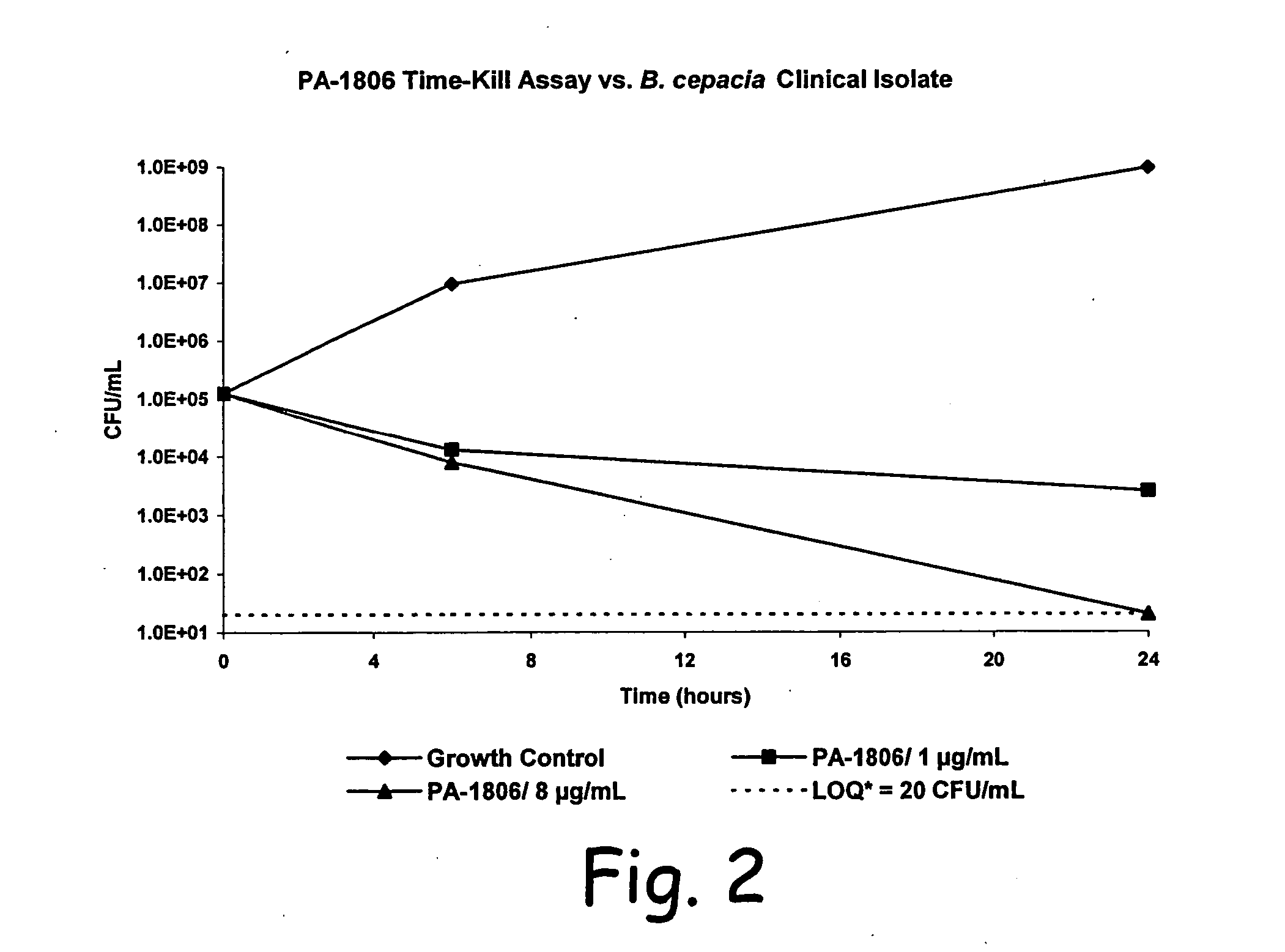Monobactam compositions and methods of use thereof
a monobactam and composition technology, applied in the direction of antibacterial agents, drug compositions, peptide/protein ingredients, etc., can solve the problems of abnormally high mucous secretions, poor penetration of parenteral aminoglycosides into the endobronchial space, etc., to enhance the antibacterial activity of monobactam compounds
- Summary
- Abstract
- Description
- Claims
- Application Information
AI Technical Summary
Benefits of technology
Problems solved by technology
Method used
Image
Examples
example 1
P. Aeruginosa Susceptibility
Strains and Cultures
[0059] Bacterial isolates were cultivated from −70° C. frozen stocks by two consecutive overnight passages at 37° C. on 5% sheep blood agar. Clinical isolates of P. aeruginosa and Burkholderia cepacia were obtained from CF centers that participated in the TOBI® phase 3 clinical trials. Laboratory strain P. aeruginosa ATCC #27853 was used as the quality control strain for MIC and MBC testing. It was also the test organism in the mucin MBC assay, and the time-kill assays.
Susceptibility
[0060] Determinations of minimum inhibitory concentration (MIC) and minimum bactericidal concentration (MBC) were performed by broth microdilution, in accordance with NCCLS guidelines (National Committee for Clinical Laboratory Standards. 1997. Methods for Dilution Antimicrobial Susceptibility Tests for Bacteria That Grow Aerobically—Fourth Edition; Approved Standard. Document M7-A4, Vol. 17, no. 2, Villanova, Pa. 10-15; and National Committee for Cli...
example 2
Time Kill Kinetics
[0063] Time-kill kinetic assays of PA-1806 were performed against P. aeruginosa ATCC 27853, and a clinical isolate of B. cepacia (#3901B). PA-1806 was tested at the MBC, and multiples of the MBC. The bacterial inoculum was prepared and standardized as previously described for MIC testing. Several glass screw-capped tubes, each containing a 10 mL aliquot of bacterial inoculum, were prepared. Antibiotic was added to each tube to create the desired final concentrations, and one tube was left untreated to serve as a growth control. The tubes were then incubated at 37° C. in rotating fashion. At time zero and at subsequent timepoints, 200 μL aliquots were removed from the tubes, diluted in sterile saline, and subcultured in duplicate on SBA plates. The inoculated SBA plates were incubated overnight at 37° C., and the colonies counted. Time-kill kinetics were expressed as the elapsed time needed to produce a 3 log reduction in CFU / mL count, as compared to the initial in...
example 3
In Vivo Administration
[0066] A patient suffering from CF and presenting an advanced P. aeruginosa infection in the lungs is treated with N-acetyl-L-cysteine (MUCOSIL™; Dey Laboratories) in accordance with the instructions of the manufacturer's product insert. After 5 minutes, the patient is treated by inhalation with a dry powder formulation of 100 mg of PA-1806 over a period of 10 minutes. A decrease in the level of P. aeruginosa infection in the lungs of the patient is observed.
PUM
| Property | Measurement | Unit |
|---|---|---|
| Density | aaaaa | aaaaa |
| Density | aaaaa | aaaaa |
| Density | aaaaa | aaaaa |
Abstract
Description
Claims
Application Information
 Login to View More
Login to View More - R&D
- Intellectual Property
- Life Sciences
- Materials
- Tech Scout
- Unparalleled Data Quality
- Higher Quality Content
- 60% Fewer Hallucinations
Browse by: Latest US Patents, China's latest patents, Technical Efficacy Thesaurus, Application Domain, Technology Topic, Popular Technical Reports.
© 2025 PatSnap. All rights reserved.Legal|Privacy policy|Modern Slavery Act Transparency Statement|Sitemap|About US| Contact US: help@patsnap.com



